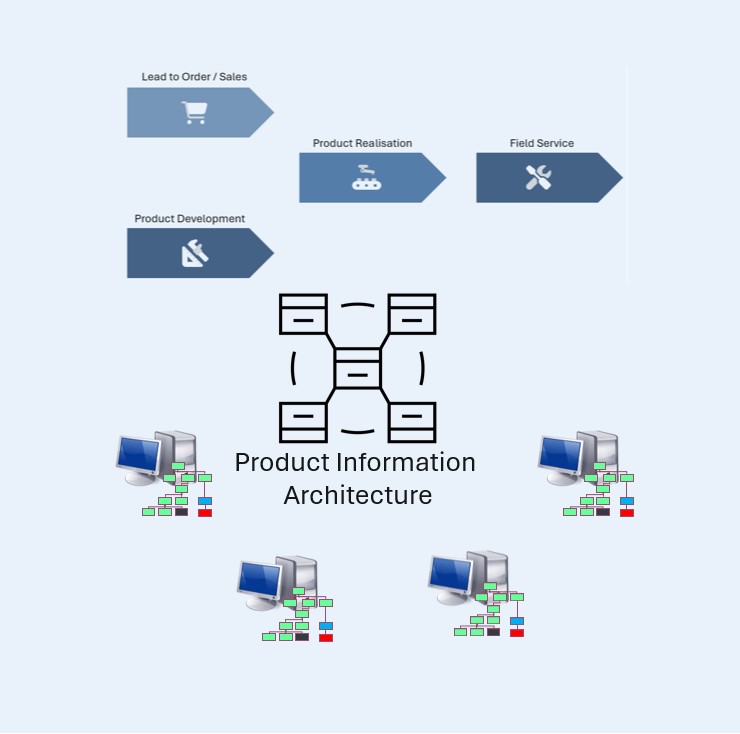
What is PLM?
PLM or Product Lifecycle Management is probably one of the most misused terms in modern corporate lingo. Very few software platforms, frameworks or other initiatives really has the potential, ability or ambition to Manage the Product across it’s full Lifecycle. It can still be valuable to manage Product Information across some very challenging life stages like Design, Manufacturing or In Service. We tend to look for the best solutions given the specific tasks and point in time.
Let’s look at the lifespan of Business Processes, IT Systems and Product Information. There is, of course, a high dependency on the portfolio of products and services, but I would argue that:
Business Processes are changed regularly and getting updated at least every year.
IT Systems have a lifespan of 7 – 10 years and are generally updated at least every third year.
Product Information is valid as long as there is an individual of the product in use. The B52 bomber, industry components and other heavy machinery can potentially be in us for 100 years or more.
Product information should be
independent of the IT system where it resides
and independent of the business process creating it.
An organisation with the ambition to maintain their products over time needs to find an approach to Product (Information) Lifecycle Management that is disconnected from their IT Systems and Processes. They need a robust Product Information Architecture that makes sense over time.
How can this be realised and governed over time in Business Processes and IT Systems? My take on this is that there is no silver bullet. You need to work with the elements of Business Processes, IT Systems and Product Information Architecture, make sure that you have a documented, visualised strategy and then put a governance model in place.